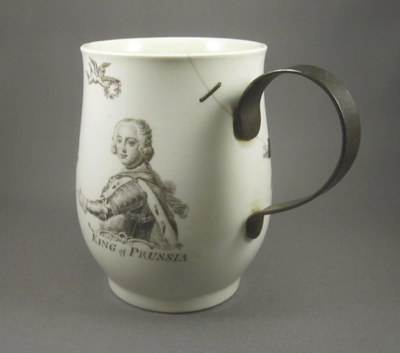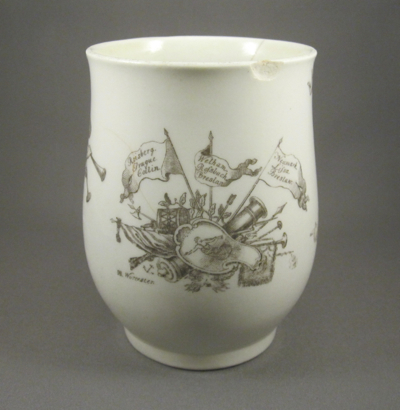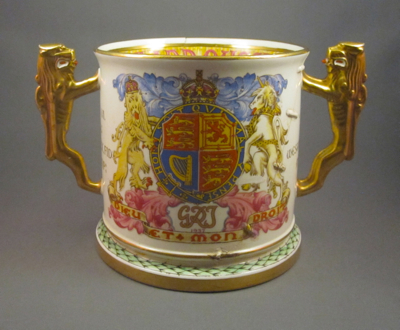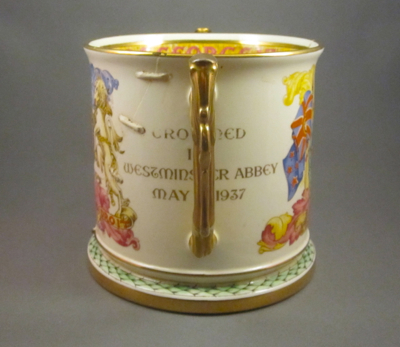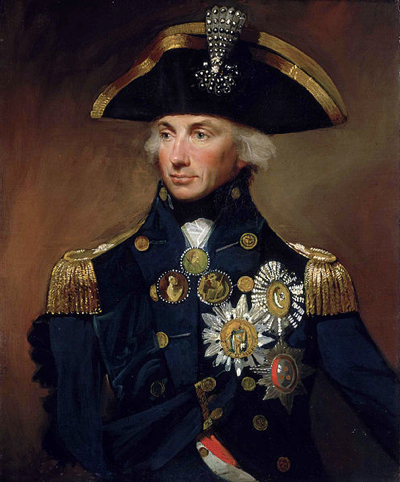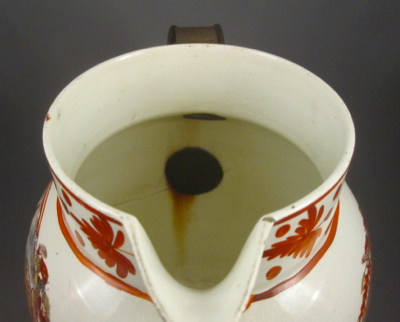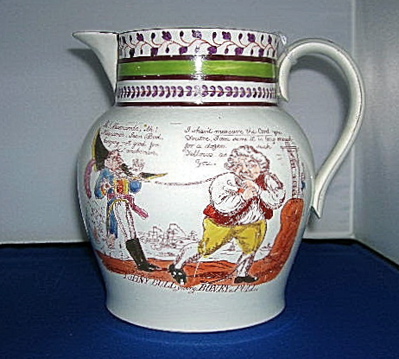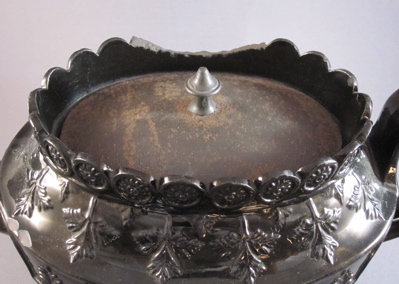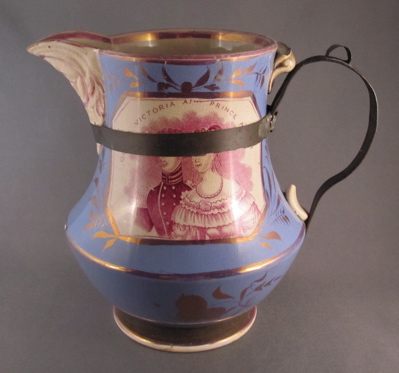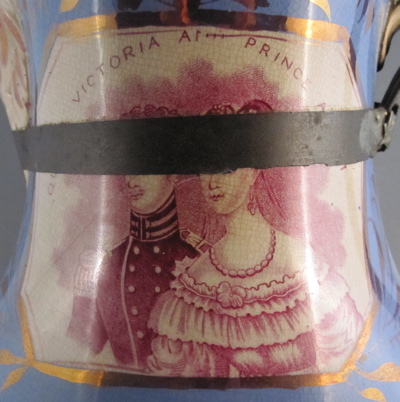I purchased this first period bell-shaped Worcester porcelain mug from a dealer in the UK who has been feeding my compulsive desire for antiques with inventive repairs for many years. It has a black transfer print of Frederick the Great, the King of Prussia, along with military trophies, an angel blowing a trumpet, and a putto with a wreath. It is dated 1757 under his left arm and marked RH (for Robert Hancock) Worester and an anchor mark for Richard Holdship (a rebus for his last name.) The decoration was taken from Richard Houston’s engraving after a painting by Antoine Pesne.
This is one of those items that if I saw one in a shop in “perfect” condition, I would secretly wish it had an early repair, as I am drawn to strong graphic images on ceramics. Luckily for me, this one has a metal replacement handle, attached by a metalsmith after the original loop handle broke off, as well as two metal staples to help stabilize a crack.
During my recent visit to the UK, I spotted the same transfer decoration on numerous pieces of ceramics included in many different museum collections. This jug can be found in the fabulous ceramics collection at the V&A.
This mug, with similar form, decoration, and its original handle intact, shows what the handle on my mug looked like before it snapped off.
Photo courtesy of Stockspring Antiques


